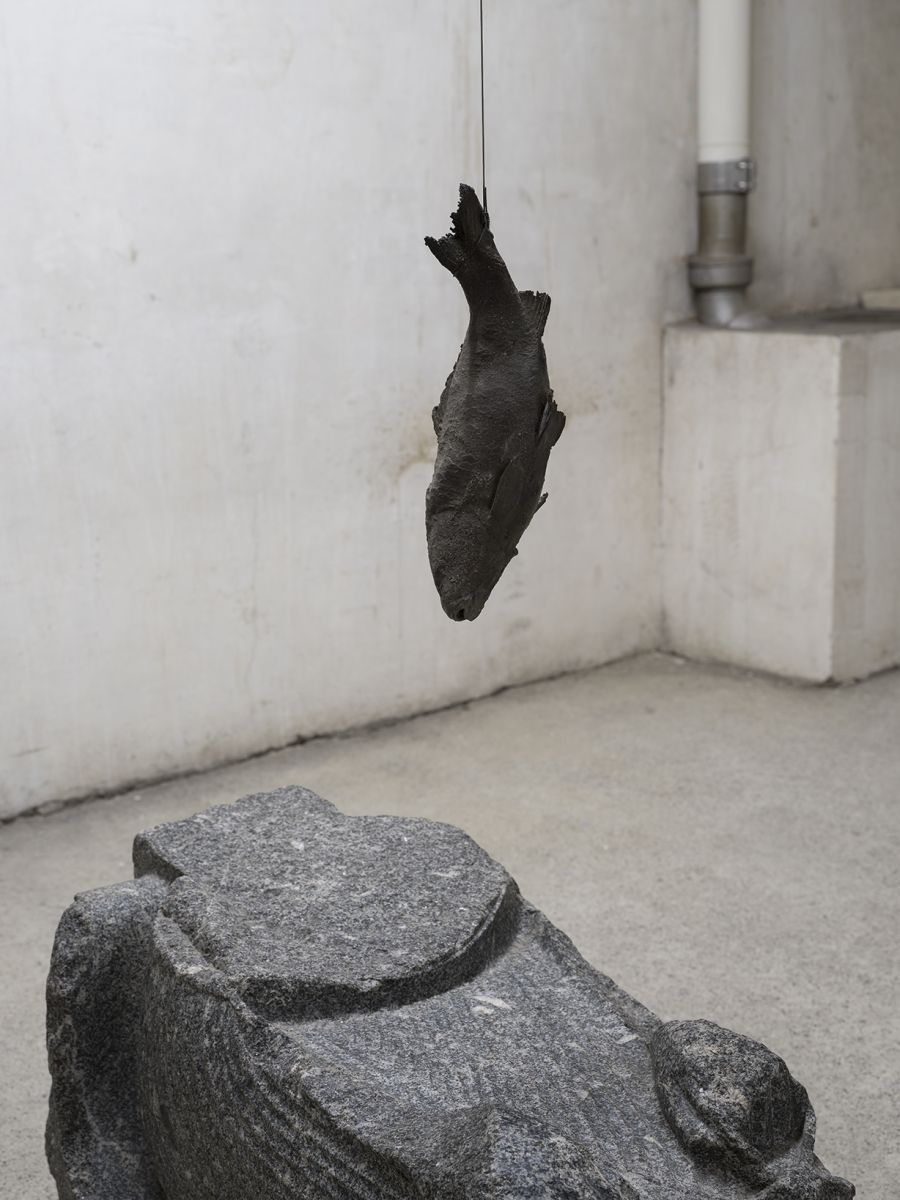Cahn Kunstraum, Steinentorstraße 19, Basel, Switzerland Opening hours:
— Art Basel week, 14 – 19.06: Tuesday - Sunday, 10am - 8pm
Saturday 18.06, 10am – 11pm
— 21.06 - 02.07: Tuesday - Saturday, 2pm - 6pm
And by appointment via contact@cahncontemporary.com
Our participation in Art Basel Parcours 2022
— Cahn Kunstraum: Solo-show, Katinka Bock, Some and any, fleeting
— Parcours Night, 18.06, 4pm - 11pm: Screening of “Quarries”, a film by the artist Ellie Ga on an invitation from Katinka Bock.
Courtesy of the Artist and Bureau, New York
Quarries was commissioned for the exhibition Fata Morgana (2022) at Jeu de Paume, Paris with support from Les Amis du Jeu de Paume; the Swedish Arts Council and the Luso-American Foundation + AIR 351, Portugal.
— Outdoor project: Sculpture, Zzeiger, 2022
13-19.06, at Kunsthaus Baselland, St.Jakobs-Strasse 170, 4132 Muttenz
Please scroll down for the French version
Why should archaeology engage in projects with contemporary artists?Artists are the subtle seismographers of our environment. Their perception is out of the ordinary. Their approach to objects from the past refers to a sensual and instinctive dimension, which is not necessarily influenced by interpretations of history and archaeology. This can lead to surprising perspectives, giving new life to objects during the exhibition. Once the event is over, they then return to their usual context.
The artist does not submit archaeology to a scientific, museographic interpretation, and does not use it to please. The object takes on a new appearance and becomes a reflection of the viewers’ interpretations. Wouldn’t it be fascinating to take part in this sensual experience through the eyes of an artist?
Archaeology must not have the monopoly on interpreting objects from the past. Objects are remnants of human activities, be they functional or ritual. By changing through time, they continue to live, and every epoch has its own interpretation.
Katinka Bock has always pursued a very free approach to the distribution of objects in space, sometimes placing them contrary to their usual purpose or in surprising contexts, thereby generating unexpected effects. Ultimately, she strips away the certainty of the elements we take for granted.
Jean-David Cahn
Specifically, this particularly inspired phrase: “Contemporariness inscribes itself in the present by marking it above all as archaic. Only he who perceives the indices and signatures of the archaic in the most modern and recent can be contemporary.” (Giorgio Agamben, “What Is The Contemporary?” in What is an Apparatus, and other essays, trans. D. Kishik and S. Petadella, Stanford University Press, 2009, p. 50).
This characteristic of Katinka Bock’s work, namely the will not to yield to the temptation of a form that would be the embodiment of a (very fleeting) Zeitgeist, an exercise whose publicists are precisely the experts, appears to offer an alternative to this contemporary/archaic dialectic. This parallel path, with its ethical dimension, seems to us to caracterise a possible aesthetic, which, although it has not yet been given a name, appears to have established a methodology and a formal vocabulary of its own.
Thus, every time the Cahn Gallery makes its rich collections available to contemporary artists, authorising appropriations, misappropriations, dialogues or confrontations, we can observe a deepening of the critical exploration of this contemporaneity that Giorgio Agamben calls into question; we now invite you to a new chapter of this exercise, a form of “stress test” of contemporaneity.
Jocelyn Wolff
Les artistes sont les fin·e·s sismographes de notre environnement. Il·elle·s ont une perception hors du commun. Leur approche à l’égard des objets du passé renvoie à une dimension sensuelle et instinctive, qui n’est pas nécessairement influencée par les interprétations de l’Histoire et de l'Archéologie. Cela peut mener à une approche surprenante, donnant une nouvelle vie aux objets lors de l’exposition. Après l'événement, ces derniers retournent ensuite dans leur contexte habituel.
L’artiste ne place pas l’archéologie dans une interprétation scientifique, muséographique ou ne lui attribue pas la fonction de plaire. L’objet prend une nouvelle apparence et devient le reflet des interprétations de ceux qui le regardent. Ne serait-il pas fascinant de participer à cette expérience sensuelle à travers les yeux de l’artiste ?
L’archéologie à elle seule ne doit pas avoir l’exclusivité de l’interprétation des objets du passé. Les objets sont des restes d’activités humaines, qu’ils soient fonctionnels ou rituels. Ils n’ont pas cessé de vivre en changeant à travers le temps, et à chaque époque, son interprétation.
Katinka Bock a toujours développé une approche très libre dans la répartition des objets dans l’espace, en les mettant parfois à l’opposé de l’habituel ou dans un contexte surprenant donnant ainsi des effets inattendus. Au fond, elle enlève la certitude des éléments que nous prenons comme acquis.
Jean-David Cahn
Ainsi, cette phrase particulièrement inspirée : « La contemporanéité s’inscrit, en fait, dans le présent en le signalant avant tout comme archaïque, et seul celui qui perçoit dans les choses les plus modernes et les plus récentes les indices ou la signature de l’archaïsme peut être un contemporain. » (Giorgio Agamben, « Qu’est-ce que le contemporain ? », Rivages poche, Petite Bibliothèque, 2008, page 35).
Cette qualité propre au travail de Katinka Bock, à savoir la volonté de ne pas céder à la tentation d’une forme qui serait l’incarnation d’un (très fugace) Zeitgeist, exercice dont les publicitaires sont précisément les expert·e·s, apparaît justement offrir une alternative à cette dialectique contemporain/archaïque. Cette voie parallèle, avec sa dimension éthique, nous semble peut-être caractériser une esthétique, qui, si elle n’a pas encore su trouver de nom, nous semble bien avoir posé une méthodologie et un vocabulaire formel propres.
Ainsi, à chaque fois que la galerie Cahn met à disposition d’artistes contemporain·e·s ses riches collections, autorisant appropriations, détournements, dialogues ou confrontations, nous pouvons observer un approfondissement de l’exploration critique de cette contemporanéité que Giorgio Agamben interroge ; c’est un nouveau chapitre de cet exercice, forme de « stress test » de la contemporanéité, que nous vous invitons aujourd’hui à découvrir. Jocelyn Wolff
Linked articles

The second episode of Entretiens de Cahn Contemporary
